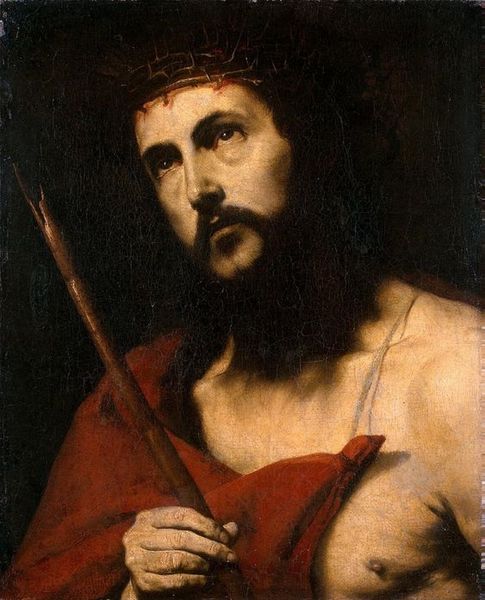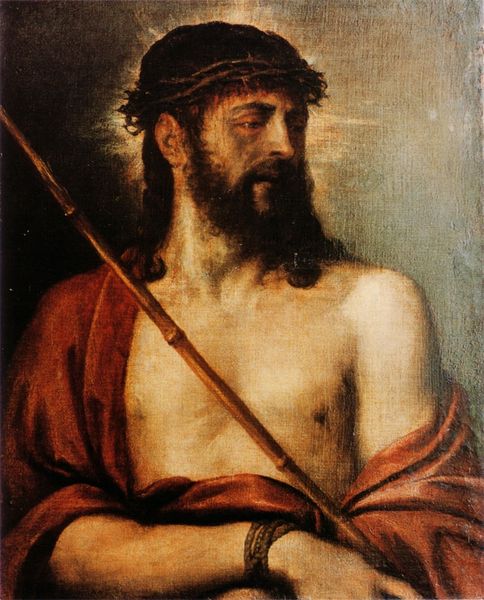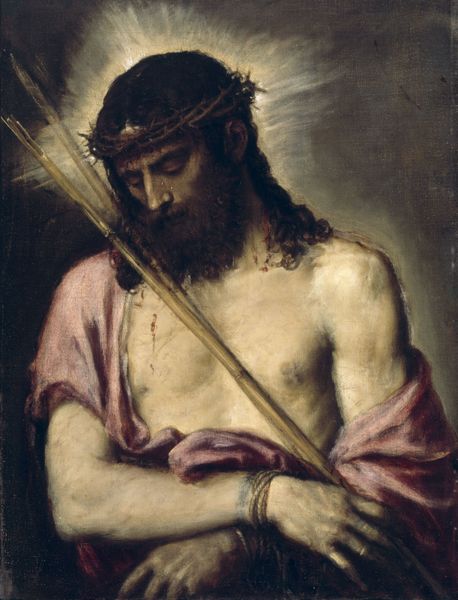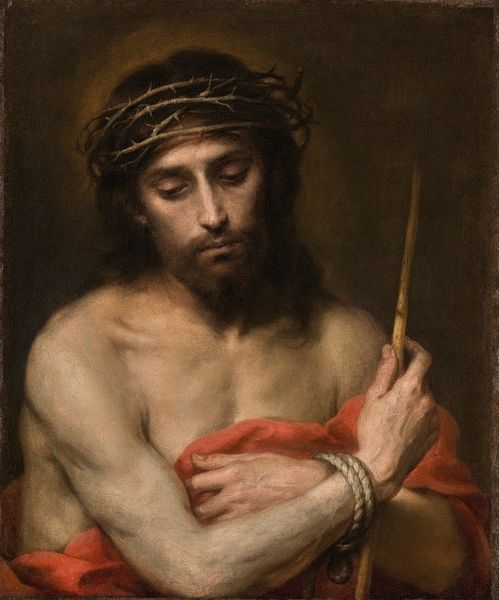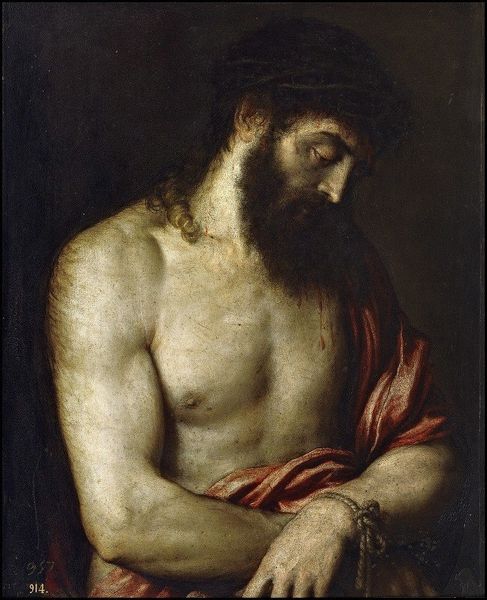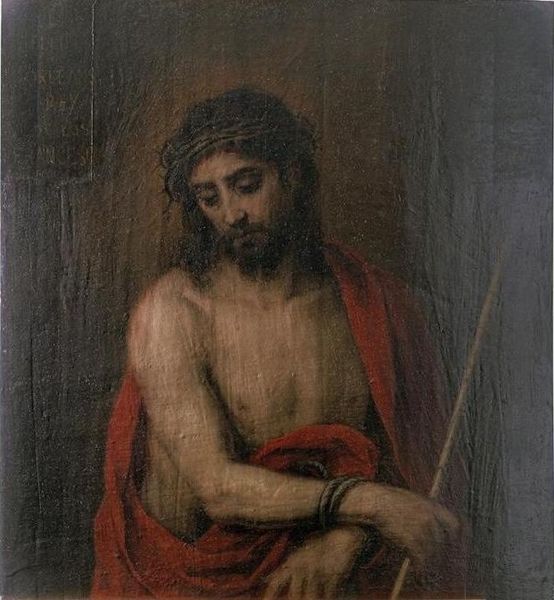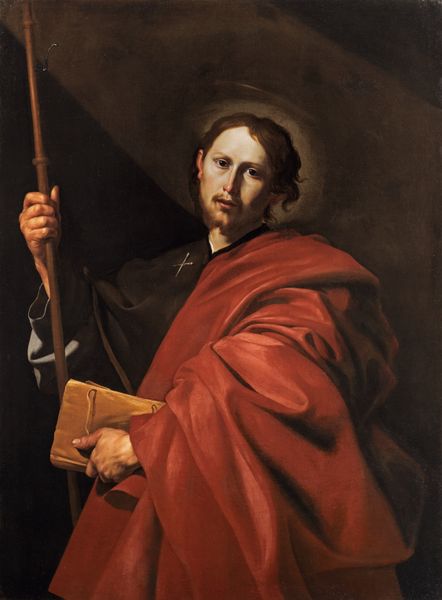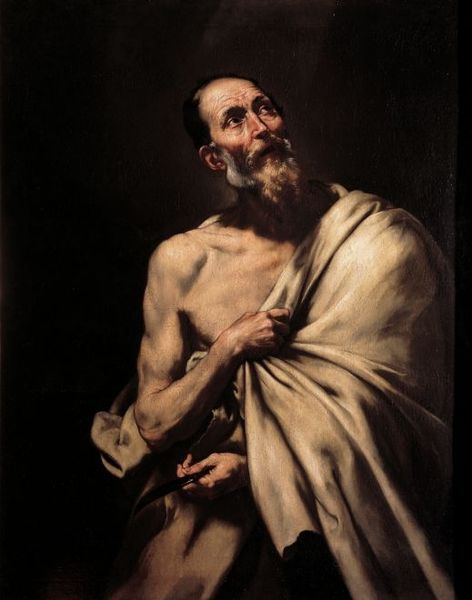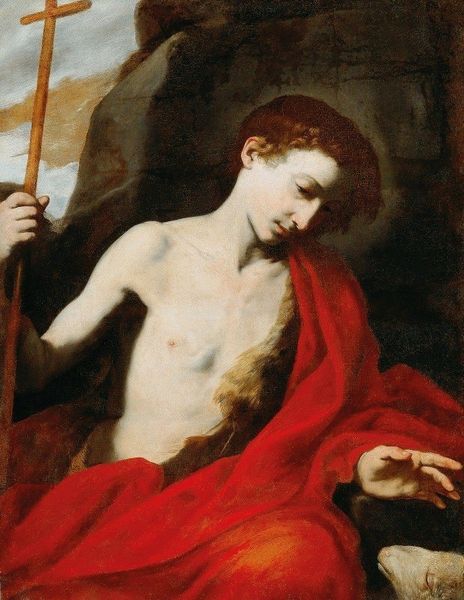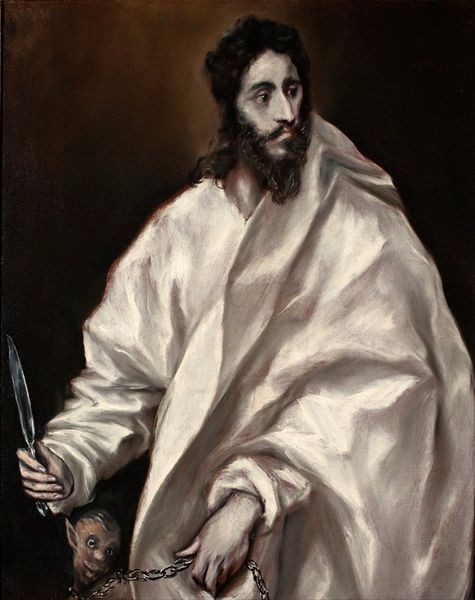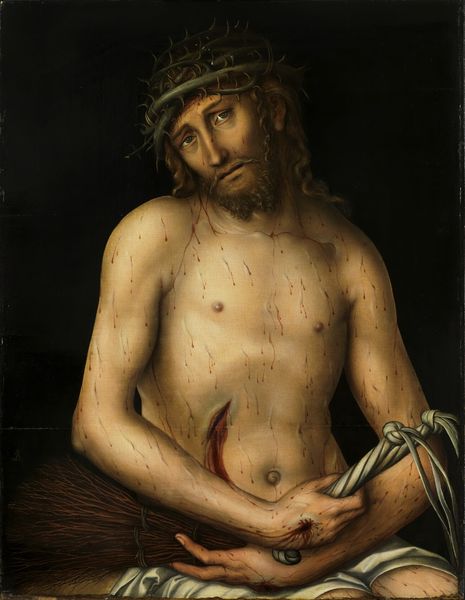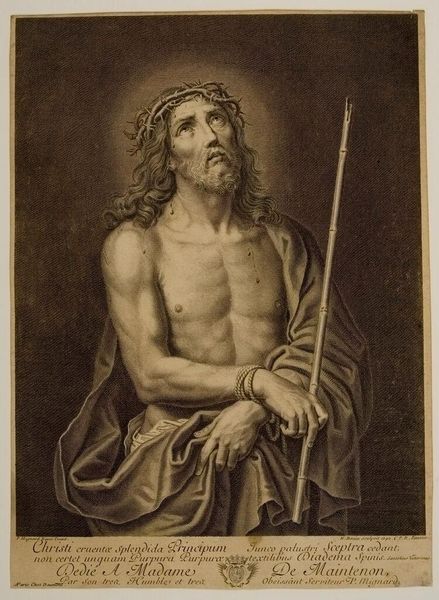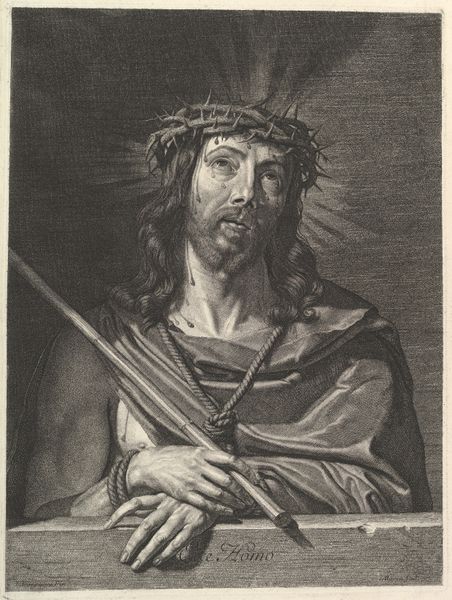
painting, oil-paint
#
portrait
#
baroque
#
painting
#
oil-paint
#
figuration
#
chiaroscuro
#
history-painting
Copyright: Public Domain: Artvee
Curator: Jusepe de Ribera, a leading figure in the Spanish Baroque, is the artist behind this evocative oil painting, "Ecce Homo." The title, Latin for "Behold the Man," points to its subject: Christ after the flagellation, presented to the public by Pontius Pilate. Editor: Immediately striking is the stark contrast—that tenebrism! It draws your eye right to Christ's face. The almost theatrical lighting really amplifies the palpable sense of suffering. Curator: Yes, Ribera’s expert handling of chiaroscuro adds a layer of dramatic intensity, a signature element of Baroque art which uses the opposition of light and darkness to create depth and draw in the viewer. In its time, it made the stories come alive and served as moralistic tools for both Church and society. Notice also that Ribera chooses to portray Christ with remarkable realism, not idealizing him as many earlier artists did. Editor: The gaze is key. Christ looks directly out at us; it feels almost accusatory. The red robe—such a vivid, almost garish color against that dark background—seems to mock his status. I also note the textured surface of the skin, especially on the hands, creating almost palpable detail to draw out the humanity of his form. Curator: Ribera, deeply influenced by Caravaggio, often employed such dramatic naturalism in his religious works. There's a raw, almost visceral quality here which invites reflection on themes of power, injustice, and the human condition within the frame of Christian martyrdom. The work itself, therefore, stands as an ideological commentary for contemporary life. Editor: Precisely, the realism underscores the pathos, making the suffering almost unbearable to witness. In looking more, that scepter adds a bitter note of irony to the composition. Even a minimalist choice adds to this painting's rich sense of visual information. Curator: Examining Ribera's "Ecce Homo" helps to explore the Baroque era through not only aesthetics, but religious and philosophical ideas of the 17th century. Editor: Analyzing composition and detail allows the image of "Ecce Homo" to draw an evocative story of human and divine intersection.
Comments
No comments
Be the first to comment and join the conversation on the ultimate creative platform.
